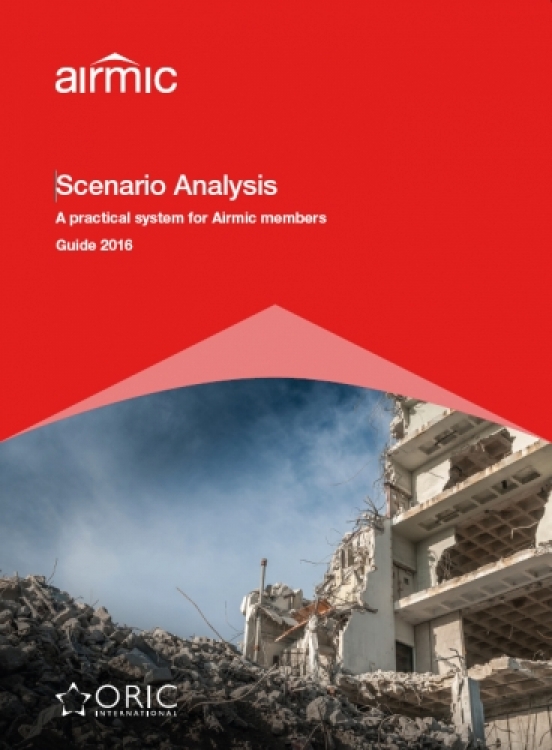Scenario Analysis

Airmic has published its long-awaited guide to scenario analysis – a document that supports a wide range of risk management activity, highlighting exposures and opportunities and informing the process of buying insurance.
Scenario analysis is an exercise conducted to consider the questions ‘what might happen, and what would we do?’ It is used, among other things, to test the effectiveness of risk controls and to assess the robustness of insurance wordings. The activities it can assist include crisis management, business continuity planning, strategic planning, testing of the business model and ensuring that insurance policies deliver the intended cover.
The guide – written with support from operational risk specialists ORIC - takes the reader through the seven key stages of scenario planning (see diagram below), highlighting the pitfalls, providing check lists to help ensure that all bases are covered. Whilst every organisation is different, the document sets out the principles and approach that apply regardless of the specific circumstances. These are illustrated with three case histories.
“This guide is intended both to reflect and promote the growing professionalisation of risk management,” said Airmic deputy CEO Julia Graham. “It also overcomes the barriers between insurance and risk management, demonstrating how they are part of the same process, feeding off each other.
“Scenario analysis is a key strategic activity, and it should form part of the organisation’s overall risk management system. Used correctly it will broaden the reach and raise the status of our members within their organisations.”
The Insurance Act, which comes into force in August, will make scenario analysis even more important and valuable as a tool when purchasing or renewing policies, especially in relation to the requirement for ‘fair presentation’. It typically involves sitting down with brokers, underwriters, lawyers, adjusters and others to talk through how a policy would respond to different circumstances. If for any reason the proposed terms are found to be lacking, they can be adjusted pre-inception.
“Scenario analysis helps to identify exposures and weaknesses within the organisation, supporting risk mitigation and wider risk management. In that sense it puts insurance purchase at the centre of good management and demonstrates how it can be strategically important to the whole organisation,” says the report’s author, research and development manager Georgina Wainwright.
The content was prepared through a series of surveys, roundtables and interviews with Airmic members and specialist organisations.
Seven key stages of scenario planning for Airmic members

